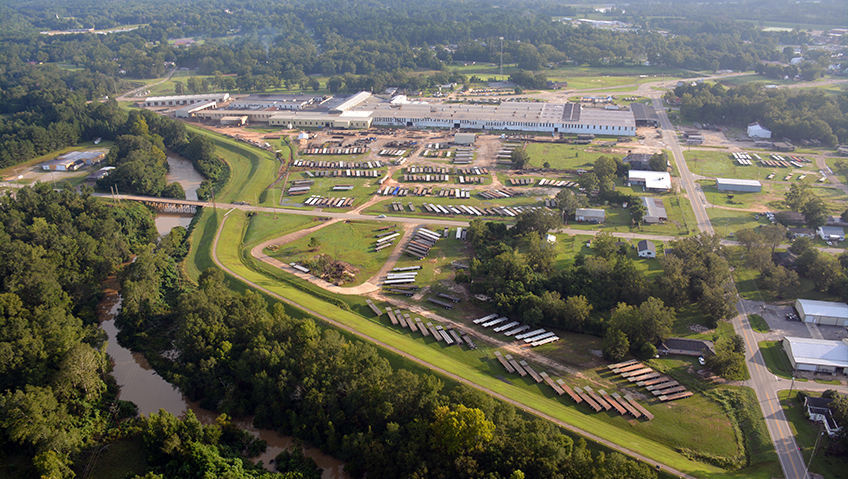We take quality for granted – until something goes wrong. Shipping customers a batch of poorly made widgets, gizmos, or thingamajigs can make all the difference to orders being returned, cancelled, and even the loss of future business.
From the taste and aroma of our favourite morning coffee to the safety and reliability of the cars we drive, there is an inherent expectation that the product we purchase is consistent and produced to meet specific quality benchmarks. In manufacturing, these standards are especially important.
Although many of us may think of quality control as relatively new, its origins go back hundreds of years to the Middle Ages. Apprentice craftsmen or merchants were under guilds associated with a certain town or city. Vital to strengthening local economies, guild members varied considerably, including everything from butchers and bakers to architects, soap-makers and leather-workers. Regardless of their discipline, these men and women had several goals in common, including setting and maintaining quality standards for the goods they produced.
For centuries, emphasis among tradespeople was on quality over quantity. Goods such as shoes were painstakingly made by hand, which changed dramatically with the Industrial Revolution and the shift to machine manufacturing in the 1760s.
Industries as disparate as meatpacking and munition-making soon adopted and improved assembly line production, which required fewer skilled workers, less training, and reduced physical effort. When engineer and automotive visionary Henry Ford brought in the world’s first moving assembly line, cars which previously took 12 hours to assemble could be built in about an hour and a half.
Successful companies are founded on quality, and one of the legendary examples is Toyota. Founded by Kiichiro Toyoda in Japan in 1933 and later becoming the Toyota Motor Corporation, the company‘s future growth and global success were hardly the result of good luck. Following the Second World War, Toyota executives toured big American automobile manufacturers including the Ford Motor Company, noting their production methods and improving them in their own facilities.
Coupled with sound business sense, these careful observations of U.S. production led to initiatives including lean manufacturing systems, and Total Quality Management, better known simply as TQM, and Quality Control (QC).
Lean is founded on tried-and-tested principles including one-piece flow, and zero defects. TQM is based on putting customers first and kaizen, Japanese for “continuous improvement” or “change for the better.” Streamlining operations results not only in improved processes flow, but eliminating waste, just-in-time delivery, and maximizing equipment efficiencies, which ensures customer satisfaction, and greater profits.
Known internationally for its highly efficient manufacturing, the company’s Toyota Production System (TPS) was officially described almost 30 years ago. Along with incorporating what company officials saw when touring auto plants, they were inspired by the way American supermarkets were set up, in particular by the constant restocking of items on shelves.
This principle was transposed to Toyota factories, with workers being minimally – but reliably – supplied with only enough parts they needed at any one time, reducing waste and unnecessary expenditure.
Investopedia defines QC as “a process through which a business seeks to ensure that product quality is maintained or improved.” This is achieved through staff training, establishing quality benchmarks, testing products, and creating “an environment in which both management and employees strive for perfection.”
Products coming from nature, such as meat, must pass inspections and quality control tests to prevent food-borne illnesses that become more and more rigorous yearly. These include evolving checks for chemical residues.
These and other food products are scrutinized by the likes of the U.S. Department of Agriculture (USDA) and the Canadian Food Inspection Agency. Other agencies, like the Canadian Beef Grading Agency (CBGA), grade beef, veal and bison.
While most consumers will ask their butcher for “their best steaks,” many are unaware there are 13 grades of beef and five yield classes in Canada. Many factors, including age of the animal, muscling, marbling, and fat color and texture are taken into consideration.
Quality control exists in virtually every service, and every sector, of today’s economy. From the tap water we drink to the highways we drive on to the life-saving medicines we use and the beverages we consume, all are governed by quality control guidelines. More importantly than ever before, we place a great deal of trust in manufacturers that the products they make are held to exacting quality and safety standards.
And as advanced manufacturing techniques evolve and manufacturing processes are streamlined thanks to automation, more of this work is being taken out of the hands of humans, and our faith is actually being placed in machines.
Today, nearly every industry has its own sets of quality standards. In the pharmaceutical industry for example, many procedures are in place to assure quality and consistency, including strict laboratory procedures, staff training, testing, calibrating and maintaining laboratory equipment, cleaning, storage, and labeling.
Then there are standards set to comply with requirements established by the European Union (EU), United States Pharmacopoeia (USP), British Pharmacopoeia (BP), and others. Without updated quality standards manuals (QSMs) and laboratory procedures, the entire system would fall apart.
For businesses of all sorts, QC represents care and integrity. Consider its absence: If a manufacturer promotes and sells a stepladder with a stated maximum weight capacity of 300 pounds (136 kg) and the ladder snaps at just 200 pounds (90 kg), word will quickly get out that the company is deceitful, and sells products that are likely to be dangerous.
The term for this concept is ‘cost of poor quality’ (COPQ), and it can put a company out of business quicker than almost anything.
Establishing and following quality standards benefits everyone. It encourages consumer confidence and profitability for the manufacturer. International standards set under the International Organization for Standardization – better known simply as ISO – provide manufacturers with yet another badge of pride in craftsmanship, and reassure the public they are following well-developed standards.
As of 2019, ISO has published over 21,584 standards under ISO 9000 – Quality Management; ISO/IEC 27000 – Information Security Management Systems; ISO 14000 – Environmental management; and many others covering risk management, social responsibility, and other areas.
Quality control is not static. As more and better technology is developed, it keeps evolving to ensure the items we buy are safe, well-made, and free from defects. From raw materials to finished products, testing must be performed at different stages of manufacturing to make sure, for instance, that the medicines we buy help to heal rather than harm, and that the vehicles we own are reliable.
With proper QC measures in place, brand loyalty is encouraged, and customer satisfaction is far improved. If purchasers know with some certainty what they are getting every time, they are more likely to keep coming back.
For manufacturers, properly applied QC can lower manufacturing costs and ensure consistency, making items less expensive to make. Internally, quality control often buoys morale, since every employee likes to know that he or she is part of a team dedicated to making the best products on the market.
And with each satisfied purchaser referring others to a great product through word-of-mouth, guaranteeing quality is the ultimate in free advertising.






